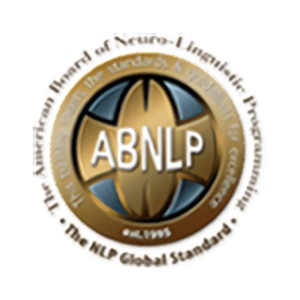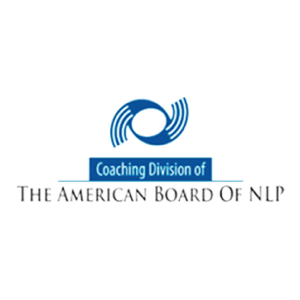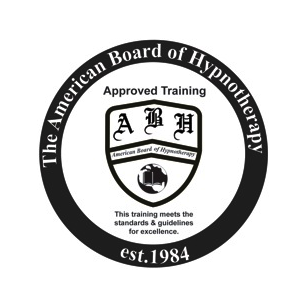Neuro-Linguistic Programming, also known as NLP, is a rapidly advancing and widening field due to the fact that it has a plethora of applications in daily life. Its wide scope has made it applicable in almost any situation where you interact with another person.
One of the most crucial subfields of NLP is meta-models, which can greatly assist in making one an effective and clear communicator. However, coming to grips with and learning meta-models can be a time-consuming and arduous process due to the sheer scale of the field.
This article will provide you with a detailed overview of NLP meta-models. Moreover, it shall include a quick rundown of various different meta-models and their unique use cases.
This shall help you get up to speed on the usage and employment of meta-models so that you can incorporate them into your life in no time.
What Is the Meta-Model in Neuro-Linguistic Programming?
In Neuro-Linguistic Programming, the meta-model is a model that helps identify and challenge the underlying assumptions and language patterns used in communication.
It is based on the idea that the way we communicate with ourselves and others affects our thoughts, behaviors, and actions.
The meta-model consists of a set of questions that can be used to challenge and clarify the language and thinking patterns of others. These questions are designed to help identify the specific, sensory-based details missing from a person’s language and to encourage them to express their thoughts and feelings more precisely.
Using the meta-model, NLP practitioners aim to help people communicate more effectively and accurately and better understand the thought processes and beliefs underlying their behaviors.
Generalizations
A generalization is a statement that makes a broad, sweeping assumption about a group or category of things without considering the specific details or exceptions to that assumption.
Generalizations often take the form of words like “always,” “never,” “everyone,” or “no one,” and they tend to be overgeneralizations that do not accurately reflect reality.
In the NLP meta-model, generalizations are identified as one of the types of language patterns that can be challenged and clarified through the use of meta-model questions.
Modal Operators of Necessity
Modal operators of necessity are words or phrases that express a sense of necessity or requirement.
In Neuro-Linguistic Programming (NLP), modal operators of necessity are used to indicate the degree to which something is necessary or required to achieve a specific outcome or result.
Examples of modal operators of necessity include:
- must
- have to
- need to
- should
Modal operators of necessity are often used to express a sense of obligation or duty or to indicate that something is required to achieve a certain goal. They can be powerful tools for setting and achieving goals, but they can also create unnecessary pressure or stress if used excessively or in inappropriate situations.
Universals
In the context of Neuro-Linguistic Programming, universals are broad, general statements that are assumed to be true for all people in all situations.
They often take the form of words like “always,” “never,” “everyone,” or “no one” and tend to be over-generalizations that do not accurately reflect reality.
In the NLP meta-model, universals are identified as one of the types of language patterns that can be challenged and clarified through the use of meta-model questions. By asking questions that seek specific, sensory-based details, NLP practitioners can help individuals to be more precise and accurate in their language and thinking, and to move beyond universals that may be limiting or inaccurate.
Modal Operators of Possibility
Modal operators of possibility are words or phrases that express a sense of possibility or probability. In NLP, modal operators of possibility are used to indicate the degree to which something is possible or likely to happen.
They are often used to express a sense of uncertainty or to indicate that something is possible but not certain.
They can be helpful in acknowledging that there may be multiple outcomes or possibilities and encourage individuals to consider a range of options. However, they can also be used to avoid making a commitment or decision or taking responsibility for a particular outcome.
Deletions
From the perspective of NLP, deletions refer to the process of leaving out important details or information when communicating.
Deletions can occur at the level of sensory information (e.g., omitting specific details about what someone saw, heard, felt, tasted, or smelled) or at the level of meaning (e.g., omitting the context or perspective from which something is being interpreted).
Judgments/ Lost Performatives
In Neuro-Linguistic Programming (NLP), judgments are statements or evaluations that involve making a judgment or assessment of something.
They can be positive or negative and often involve using words or phrases that convey approval or disapproval.
Lost performatives, on the other hand, refer to statements or evaluations that do not specify who is making the judgment or evaluation. Lost performatives often take the form of words like “should,” “must,” or “have to,” and they can be used to convey a sense of obligation or necessity.
Unspecified Verbs
Unspecified verbs are words or phrases that represent actions or processes but that do so in a vague or general way. Unspecified verbs often involve using a verb that is broad or ambiguous in meaning, or that does not specify the specific actions or processes involved.
Comparison
When looking at NLP meta-models, comparisons are statements or evaluations that involve comparing one thing to another. They can be positive or negative and often involve using words or phrases that convey similarities or differences.
Distortions
In the context of Neuro-Linguistic Programming (NLP), distortions refer to ways in which information or perceptions can be distorted or changed in some way.
They can occur at the level of sensory information (for example, changing the way something is perceived through the use of filters or biases) or at the level of meaning (for example, changing the way something is interpreted or understood).
For instance, the following may be considered distortions under this definition:
- “I saw a monster.” (distorting the appearance of a person or object through the use of fear or imagination)
- “That person is always rude.” (distorting the behavior of a person by focusing on one or two negative instances and ignoring the rest)
- “This is the worst day ever.” (distorting the events of the day by ignoring any positive or neutral aspects)
Cause and Effect
Cause and effect refer to the idea that one event or action (the cause) leads to another event or outcome (the effect). In the NLP meta-model, cause and effect are often used to identify and challenge language patterns that assume a direct and causal relationship between 2 events or outcomes.
In the NLP meta-model, cause and effect are identified as one of the types of language patterns that can be challenged and clarified through the use of meta-model questions.
By asking questions that seek specific, sensory-based details or to understand the context or perspective from which something is being interpreted, NLP practitioners can help individuals be more precise and accurate in their communication and provide complete and meaningful information.
Presuppositions
In NLP, presuppositions refer to assumptions or beliefs that are assumed to be true in the course of communication.
They can be explicit, stated directly in the form of a statement or question, or implicit, implied through the use of language or context.
By using meta-model questions to challenge presuppositions, NLP practitioners can help individuals be more aware of the assumptions and beliefs that underlie their communication and express themselves more accurately and effectively.
Mind Reading
NLP mind reading refers to the belief or assumption that one can accurately determine what someone else is thinking or feeling without that person explicitly stating it.
It can involve making assumptions about someone’s thoughts, feelings, intentions, or motivations based on limited or incomplete information.
Complex Equivalent
A complex equivalent is a language pattern in which a person uses a word or phrase to represent a concept or idea but does so in an indirect or ambiguous way. Complex equivalents often involve using a word or phrase to stand in for a more complex or nuanced concept or idea without explicitly stating what that concept or idea is.
Nominalizations
In NLP, nominalizations are words or phrases that represent concepts or actions but do so in a more abstract or detached way.
They often involve taking a verb or adjective and turning it into a noun, which can make the concept or action seem more distant or less concrete.
What Is the NLP Meta-Model Used For
The NLP meta-model has a plethora of use cases depending upon the circumstance at hand and the skill of the practitioner. The following are a few common examples you might see NLP meta-models employed in.
Improving Communication and Understanding
By using the meta-model to challenge and clarify language and thinking patterns, NLP practitioners can help individuals communicate more effectively and accurately and better understand the thoughts, feelings, and beliefs that underlie their behaviors.
Identifying Limiting Beliefs and Patterns
The meta-model can be used to identify and challenge limiting beliefs and patterns of thinking that may be holding an individual back or preventing them from achieving their goals.
Setting and Achieving Goals
The meta-model can be used in conjunction with other NLP techniques, such as reframing and anchoring, to help individuals set and achieve their goals more effectively.
Facilitating Personal Growth and Change
Using the meta-model to identify and challenge unhelpful patterns of thinking and behavior, NLP practitioners can help individuals make positive changes in their lives and achieve greater personal growth and development.
NLP Meta Model Examples
Understanding how to use meta-models in daily situations can be difficult when only referring to them as abstract ideas.
To help with this issue, it can be useful to view a few examples of NLP meta-models in action. Moreover, we would also recommend that you try them in your daily life to master them.
Improving Communication and Understanding
Person A: “I’m feeling really frustrated with my job.”
Person B (using meta-model questions): “Can you give me an example of what specifically is causing the frustration? How do you know that it’s frustration that you’re feeling rather than some other emotion?”
Through the use of meta-model questions, Person B is able to clarify the specific details and context of Person A’s frustration, which can help improve communication and understanding between the two people.
Identifying Limiting Beliefs and Patterns:
Person A: “I can’t do anything right.”
Person B (using meta-model questions): “What do you mean by ‘anything’? Can you give me an example of a time when you were successful or did something right?”
Through the use of meta-model questions, Person B is able to challenge Person A’s limiting belief that they are incapable of doing anything right and encourage them to consider specific examples or counter-examples that may contradict this belief.
Tips When Using the NLP Meta-Model
Here are a few tips for using the NLP meta-model effectively:
Use Open-ended Questions
Meta-model questions are designed to challenge and clarify language and thinking patterns, and open-ended questions are a powerful tool for achieving this.
Avoid using closed-ended questions that can be answered with a simple “yes” or “no.” Instead, use questions encouraging the other person to provide more specific, sensory-based details.
Avoid Making Assumptions
The meta-model is designed to help identify and challenge assumptions, so be sure to avoid making assumptions yourself when using it. Instead, use open-ended questions to gather as much information as possible and encourage the other person to express their thoughts and feelings more precisely.
Be Respectful and Non-judgmental
The meta-model is not a tool for criticizing or judging others but rather for helping improve communication and understanding. Be sure to use it in a respectful and non-judgmental manner, and avoid using it to attack or belittle the other person.
Practice Active Listening
When using the meta-model, it’s important to be fully present and engaged with the other person. Practice active listening by giving your full attention to what the other person is saying and using verbal and nonverbal cues to show that you are listening and interested.
Final Thoughts on the NLP Meta Model
The meta-model is a powerful tool for improving communication and understanding by helping individuals to be more precise and accurate in their language and thinking patterns.
It is important to note that to use the meta-model effectively, you need to have a good understanding of the various language patterns it can be used to challenge and practice using meta-model questions in a variety of different contexts.
With practice and experience, you can become more skilled and confident in using the meta-model to improve your communication and understanding with others.
These skills will be greatly helpful in professional contexts where it is important to ensure that accurate and effective communication is taking place so that nothing is lost in translation.
Additionally, it can also help you in your personal life as you can have discussions with family members and friends more effectively and resolve disputes before they become serious.
Given the wide scope and complexity of NLP meta-models, it can be tedious and time-consuming to learn and practice all of them. Due to this, it can be quite valuable to use a course or hire an NLP coach to help guide you through the process.
This will greatly speed up your progress and help you incorporate meta-models into your daily and professional life as soon as possible.








